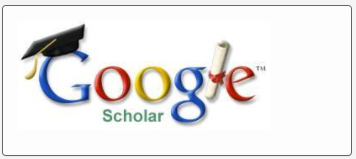From virtual to real models – ARDUINO UNO
DOI:
https://doi.org/10.52340/idw.2023.73Keywords:
Arduino UNO, Arduino IDE, tinkercad.com, PIR Motion SensorAbstract
In the "digital era," where technology is advancing more quickly than anything else, security and surveillance systems are no exception (video surveillance cameras; fire alarms; security alarms; access systems; environmental measurement products detecting air pollution level, humidity, temperature etc.). This industry is constantly advancing in terms of technology. Artificial intelligence and many others are actively being introduced in this field. Of course, it is possible to buy the technological systems stated above. They are widely available online. However, their technological aspect and the principles behind creating such "smart" products are generally fascinating. https://innotech.ge/full-color-technology-2/ ; https://innotech.ge/
Today's most popular model Arduino UNO platform is used as an example to demonstrate how to build surveillance system using its interface, which is based on the utilization of the PIR Motion Sensor block's characteristics.
The project model integration process in both a virtual and physical context is described in detail and analyzed in the paper. The following are specifically used: An Arduino UNO microcontroller board, the Arduino Software IDE (Integrated Development Environment), a local code editor on the PC, and the virtual online platform tinkercad.com. The work is supplemented by pertinent electronic diagrams, schemes, software code, descriptions of fundamental functionalities, links to virtual project simulation, real-world application, and links to video recordings of the experiment in order to demonstrate the project model's smooth operation.
Downloads
References
ზაქარიაშვილი მ., (7.10. 2022). ARDUINO – STEM ტიპის პროექტების მოდელირებისა და კონსტრუირების ინსტრუმენტი. IV საერთაშორისო სამეცნიერო კონფერენცია „განათლება, კვლევა, პრაქტიკა“. იაკობ გოგებაშვილის სახელობის თელავის სახელმწიფო უნივერსიტეტი. განათლების მეცნიერებათა ფაკულტეტი. კონფერენციის ნაშრომების კრებული გვ.. 95-98 UDK (უაკ) 378.4 (479.221.2) (063); ISSN 2449-2337; 9772449233004; თ-44. გამომცემლობა „მერიდიანი“. თბილისი, საქართველო.
მოსაშვილი ი., ონიანი ს. (2016) ARDUINO პროგრამირების საფუძვლები. საქართველოს ტექნიკური უნივერსიტეტი. TEMPUS-JPCR-544091 თბილისი.
ტაბატაძე ზ., თოდუა თ. (2019) არდუინო. პრაქტიკული სახელმძღვანელო დამწყებთათვის. საქართველოს ტექნიკური უნივერსიტეტი. თბილისი.
Nancy N. Heilbronner (2014) International STEM Achievement: Not a Zero-Sum Game. Global Education Review, 1 (4). 7-14. https://files.eric.ed.gov/fulltext/EJ1055227.pdf ბოლო ნახვის თარიღი 24/01/2023
Geddes, Mark. (2016) Arduino project handbook : 25 practical projects to get you started / San Francisco. http://lccn.loc.gov/2015033781 ბოლო ნახვის თარიღი 24/01/2023
https://ss-valpovo.hr/wp-content/uploads/2020/01/arduinoprojecthandbook.pdf
STEM (Science, Technology, Engineering, Math ) Global Education Innovation Initiative . https://globaled.gse.harvard.edu/stem-science-technology-engineering-math ბოლო ნახვის თარიღი 24/01/2023







